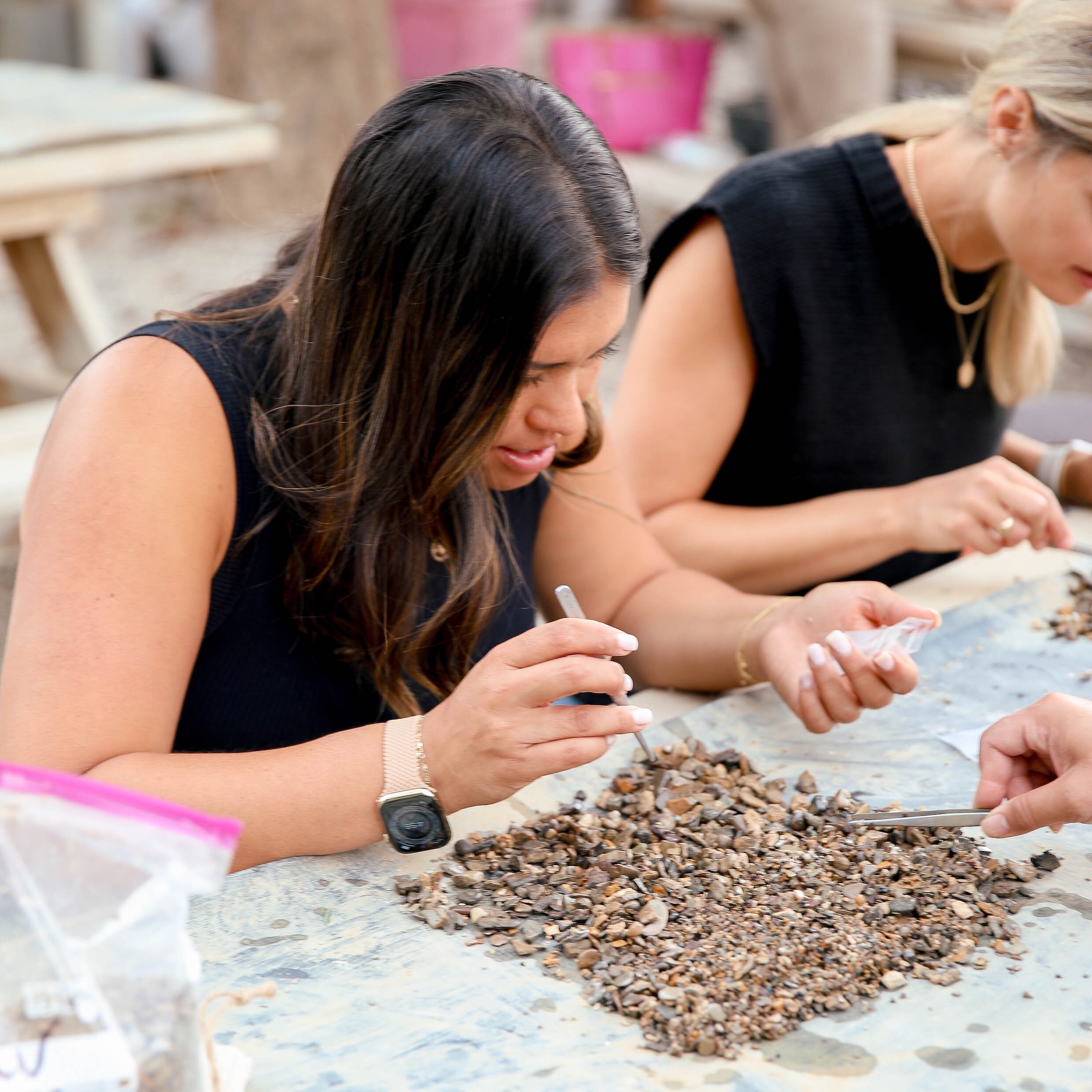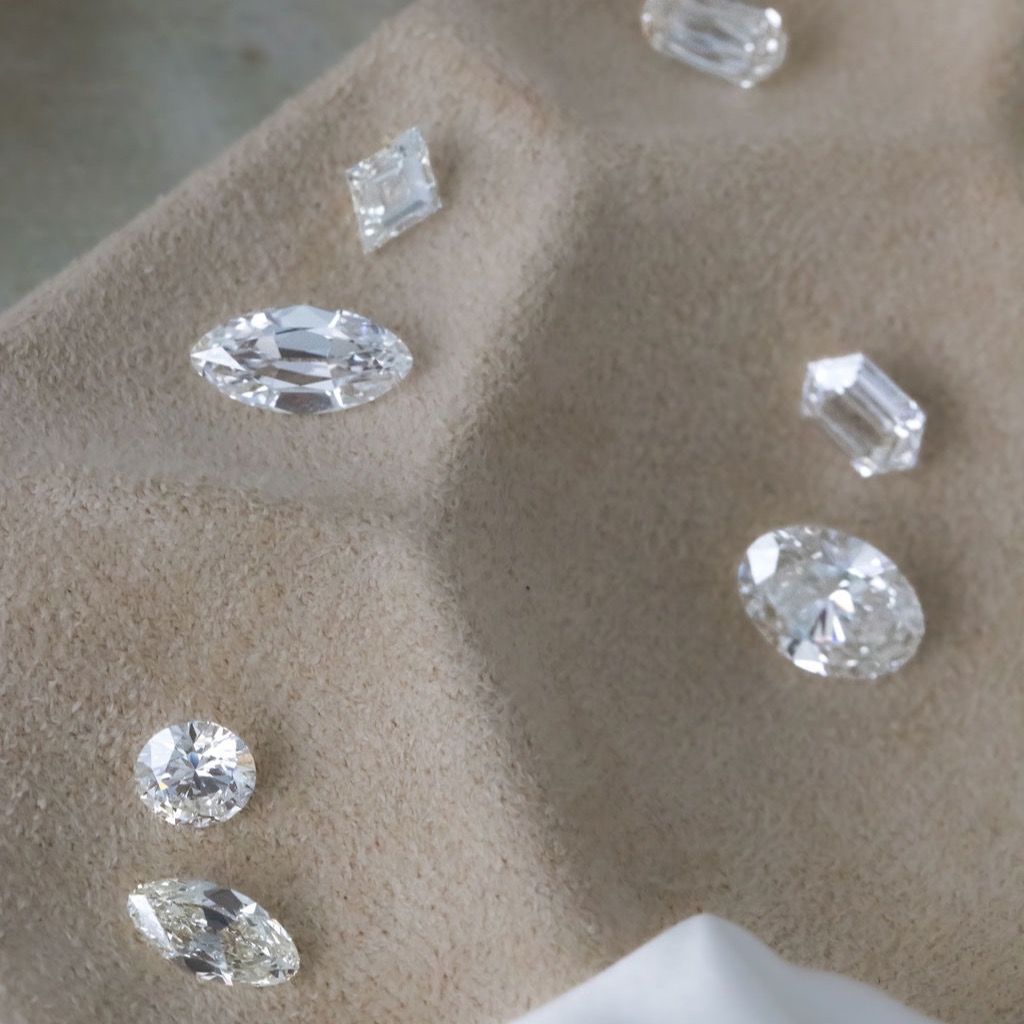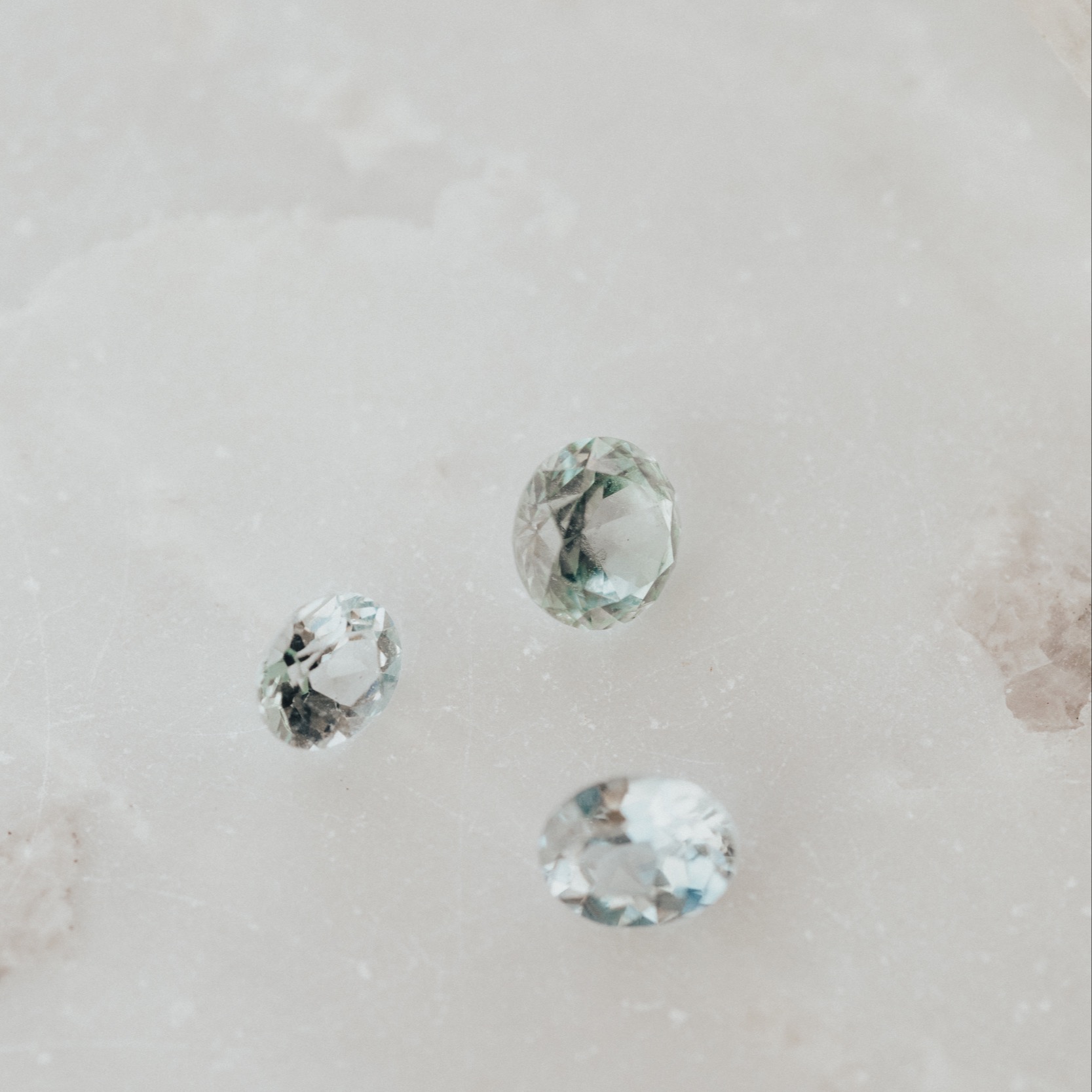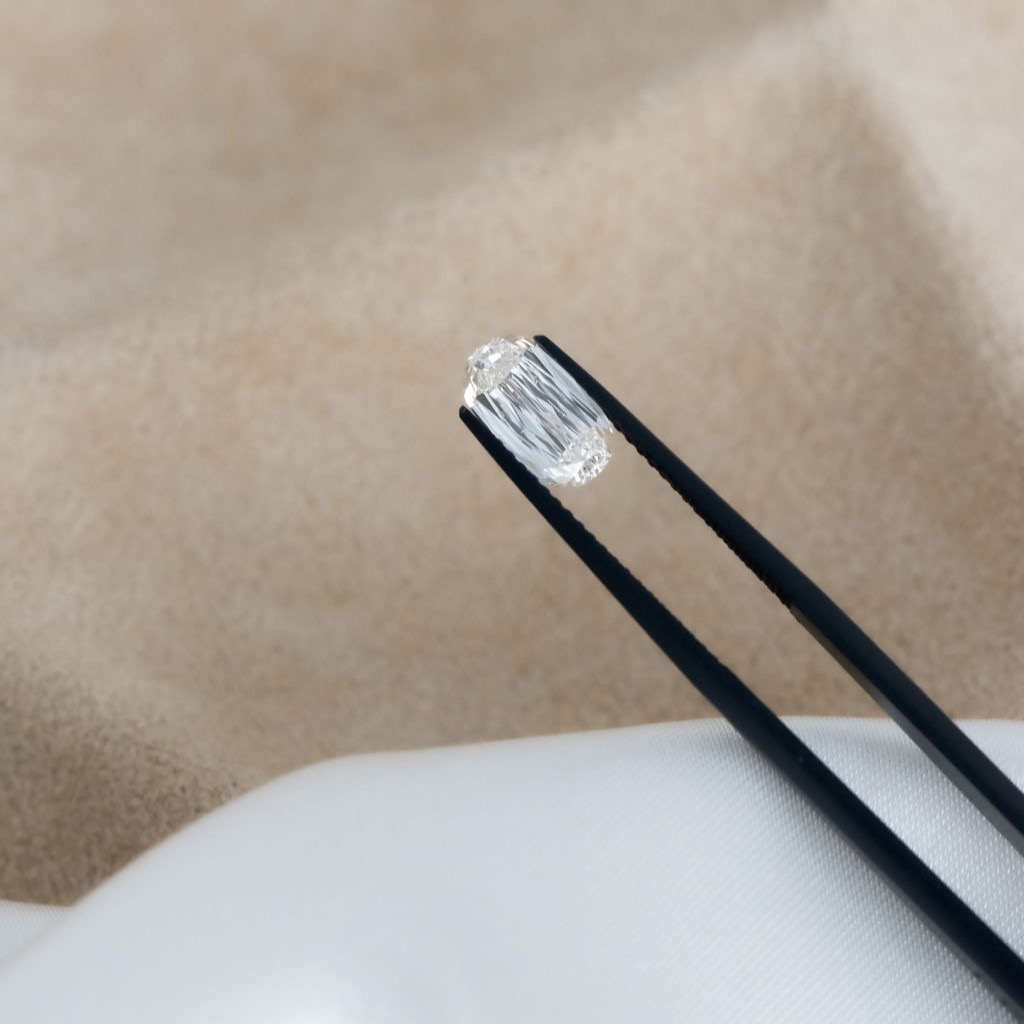Sapphires vs Diamonds: What’s the Difference?
Sapphires and diamonds are both sought-after gemstones for engagement rings, wedding rings, and other sentimental jewelry. But how do you choose between them?
In this guide, we’ll outline all the key differences you need to know when shopping for sapphires vs. diamonds. They vary in prices, origins, appearance, meaning, and durability. Keep reading for everything you need to know about these two stunning stones.
What is a Sapphire?
Sapphire is a precious gemstone and member of the corundum family. While sapphires are famous for their blue hues, they can come in almost any other color, except for red.
Take a deep dive into the different types of sapphires in our sapphire guide.
What is a Diamond?
Diamond is the hardest natural material on earth. The traditional engagement ring choice is a white diamond, but diamonds can also come in champagne, yellow, or other ‘fancy’ colors.
See all the essential diamond information in one place in our diamond guide.
Prices
Overall, natural diamonds are more expensive than sapphires. For both, the cost per carat increases with the total carat weight of the stone. This is because raw diamonds or sapphires large enough to yield a high carat weight stone are exceedingly rare. Gemstone quality factors, such as clarity and cut, also play a significant role in the stone’s value.
Sapphires can cost as little as $25 per carat, while large, high-quality sapphires can cost over $11,000 per carat. Natural diamonds range from $2,000 per carat to as high as $30,000 per carat. Lab grown diamonds have a more affordable price tag, ranging from $500 to $1000 per carat.

History
Sapphire has been treasured as a meaningful gemstone since 800 BCE. Over the millennia, cultures across the world have valued sapphire as a symbol of protection and spiritual enlightenment. In the 1980s, sapphire engagement rings saw a surge in popularity when Prince Charles proposed to Lady Diana with a 12-carat blue sapphire.
Diamonds were first found in India, at least 3,000 years ago, and have been treasured as gemstones and adornments ever since. Diamonds were also historically used for engraving because of their hardness.
Diamonds rose in popularity following new developments in cutting and polishing in the 19th century. In the mid 20th century, an advertising campaign by the diamond company De Beers boosted diamonds to new heights.
Geology
Sapphires are composed of corundum, also called aluminium oxide. They can take millions of years to form and are typically found in limestone and metamorphic rocks. Trace minerals within the stone give sapphires their color, from signature blue shades to other colors of the rainbow.
Diamonds are composed of pure carbon. They were formed millions of years ago within the earth’s crust.
Origins
Sapphires are mined underground, or from alluvial deposits: sediment that is deposited by running water into a stream bed. The leading regions for sapphire mines are Southeast Asia, Africa, Central Asia, Australia, and Montana.
Diamonds are found in two types of environments. Most are found in kimberlites: pipe-like formations created by volcanic activity. Other diamonds are found in alluvial deposits from kimberlite that has been eroded by water.
Different sapphire types and colors are found in different locations. Kashmir is famous for its deep blue sapphires with a silky texture, which were predominantly mined in the late 19th and early 20th centuries. Sri Lanka is famous for its bright pink-orange Padparadscha sapphires, which look like a lotus flower. Learn more about sapphire appearances by origin in our sapphire guide.
Diamonds are mined all over the world. Russia is currently the world’s leading diamond producer. Other top producers are Botswana, Canada, South Africa, and Australia. Lab grown diamonds are also a popular and affordable alternative to natural diamonds. Learn more about lab grown diamonds here.

Appearance
Inclusions
Both sapphire and diamond are naturally found with inclusions, tiny abnormalities or foreign minerals included in the gemstone. Virtually all sapphires and diamonds have inclusions, but they may not be visible to the naked eye.
While inclusions are often called “flaws”, they can also produce stunning and desirable effects. Sapphires with many inclusions take on a luxurious “silky” texture. Kashmir sapphires are famous for this silky quality. Heavily included diamonds can take on a galaxy, salt-and-pepper, or rustic appearance.
Sparkle
A stone’s sparkle is measured by its refractive index: how much a light is reflected or passes through a material. Diamonds have an exceptionally high refractive index, giving them their signature bright white sparkle. When the white sparkle from a diamond reflects into colorful flashes, it’s called “fire”.
Size
Both sapphires and diamonds are measured in carat weight. However, sapphires are denser than diamonds. That means a one-carat sapphire will appear smaller than a similarly-cut one-carat diamond.
Color change
While both sapphires and diamonds can have colors, only sapphires can change color. Many sapphires shift between purple and violet under different lighting conditions, for example, natural light vs white light vs incandescent light. Sapphires that change colors dramatically are highly prized by collectors.
Sapphires have a lower refractive index, making them less sparkly than diamonds. Sapphires have a more subtle sparkle that gives these stones an elegant look.

Colors
Sapphires are famously blue, but can come in many vivid colors, except for red. That’s because red corundum stones (the mineral sapphires are formed of) are called rubies!
Diamonds are typically colorless, but not always. Naturally-colored diamonds are formed when trace elements interact with the carbon during the diamond’s creation. Peachy or yellow-tinted champagne diamonds are a popular alternative to white diamonds, but diamonds can also be found in other “fancy” colors.
Sapphires are found in the following colors:
- Blue
- Pink
- Yellow
- Green
- White (colorless)
- Purple
- Violet
Some sapphires are comprised of multiple colors:
- Padparadscha (pink, leaning orange)
- Peacock/parti-color (blend of blue, green, and sometimes yellow)
Diamonds are found in the following main colors:
- White (colorless)
- Yellow
- Blue
- Pink
- Orange
- Green
- Brown
- Gray
- Purple
- Violet
- Red
- Black
Diamonds can have more than one of these colors, creating subtle hybrid colors like “grayish purple” or “pinkish orange” diamonds.
Hardness
Both sapphires and diamonds are measured on the Mohs hardness scale. This scale ranges from 1 (soft talc) to 10 (diamond). If you scratch two minerals together, the harder mineral will scratch the softer one.
Diamonds are the hardest gemstone on earth, making them a popular choice to represent your enduring love story. Sapphires are nearly as hard as diamonds, clocking in at a 9 on the Mohs hardness scale.
For both sapphires and diamonds, inclusions can influence the practical hardness and durability for everyday life. Stones with many inclusions, like silky sapphires or galaxy diamonds, are more susceptible to chipping.

Meanings
Sapphires represent nobility, protection, royalty, and faithfulness. Ancient cultures were inspired by the stone’s beauty and durability, and believed sapphire would protect its wearer from harm. This steadfast stone is the perfect gem for a meaningful engagement ring. Sapphire is also the birthstone for the month of September.
Diamonds symbolize strength, invisibility, and eternal love. The Ancient Greeks called diamonds “adamas”, meaning “unconquerable”. In medieval Europe, diamonds were worn into battle as amulets of protection.. Diamond is also the birthstone for the month of April.
Rarity
Sapphires are rarer than diamonds. However, they are still the most common colored gemstone. Certain colors of sapphires are rarer than others. For example, natural unheated blue sapphires with high clarity are extremely rare. Padparadscha sapphires are another rare variety.
Diamonds are not rare. Despite their value and durability, they are one of the more common gemstone options. Jewelry-grade diamonds are rarer than raw diamonds. However, at least 133 carats of jewelry-grade diamonds are sold annually.

Choosing Between Sapphire and Diamond
Sapphires are beloved worldwide for their beautiful colors, rarity, and exceptionally durable structure. They’re highly varied with many show-stopping variations, like silky blue Kashmir sapphires or sunset-colored Padparadscha, and can even change colors in different lighting.
Diamonds are prized for their unmatched durability and timeless brilliance. A well-cut diamond produces eye-catching rainbow fire when the light hits it just right, creating fine jewelry that’s simply captivating.
Whether you choose a diamond or a sapphire, make sure your stone is certified by the Gemological Institute of America to confirm the gem’s authenticity and quality. Purchasing a GIA-certified gem ensures that you’re buying the real deal, just like your true love.
If you’re ready to take the next step towards purchasing your new jewelry, check out our collections of sapphire engagement rings and classic white diamond engagement rings. Not seeing your dream ring? Book a custom engagement ring consultation to bring your vision to life with Sarah O. today.
Get more gemstone, diamond, and engagement ring tips on the Sarah O. blog.

Make the moment yours with non-traditional sapphires, emeralds, colored diamonds, and more.